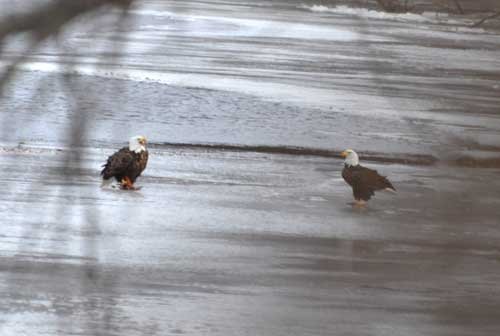What is the status of the bald eagle in New Hampshire?
The American bald eagle, selected as our national symbol in 1782, was nearly eliminated from the lower 48 states by the middle of the 20th century. In 1982, during the Mid-Winter Bald Eagle Survey, only two bald eagles were seen in the entire state of New Hampshire. But the banning of DDT in 1972 and aggressive conservation efforts have resulted in the bald eagle's remarkable recovery.
A record-high total of 75 bald eagles were reported during the 2010 New Hampshire Bald Eagle Survey held Dec. 30, 2009, to Jan. 13, 2010. This is the 30th year for the Mid-Winter Bald Eagle Survey sponsored jointly by the New Hampshire Audubon Society and the New Hampshire Fish and Game Department's non-game and endangered wildlife program.
In New Hampshire the bald eagle has recently been reclassified from endangered to threatened status. But there is still a hefty fine and possible imprisonment for killing a bald eagle or disturbing its nest.
An immature bald eagle is brown and black with varying amounts of white plumage during its first four years, after which its head and tail turn white in contrast to its black body. The young will take their first flight in 72-75 days after hatching. Eagles fly with slow, methodical, deep wing beats, and their call is a squealing scream much like that of a sea gull.









